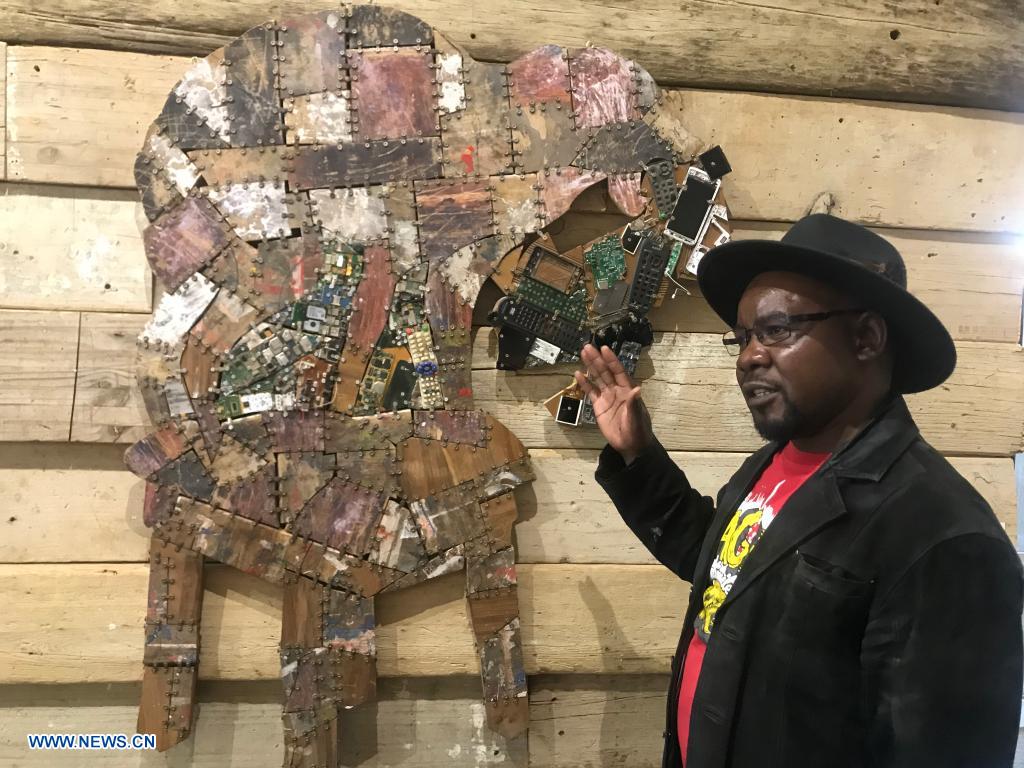
Namibian artist Fillipus Sheehama shows an artwork at his "Recalling Makalani: Material Exploration" exhibition in Windhoek, capital of Namibia, May 22, 2021. (Xinhua/Ndalimpinga Iita)
by Ndalimpinga Iita
WINDHOEK, May 29 (Xinhua) -- Evolution, heritage, innovation and encounters of multiple benefits of Makalani (palm) tree, widely used in many rural settings in Namibia, has inspired renowned Namibian artist Fillipus Sheehama's "Recalling Makalani: Material Exploration" exhibition in Windhoek, capital of Namibia.
The exhibition, which explores Makalani nuts, bones of domestic animals and wildlife, and wires and ropes, features diverse installations and artwork made out of organic and other discarded materials.
The focus on various elements of the Makalani and recycled material aims to highlight tradition, modernity, dominance, tension, unity and proposal of robust innovation in the different artworks.
"The aim is to challenge old traditions, perceptions and draw new insights on indigenous cultures, practices to drive innovation that would transform and uplift people at the grassroots level. Art can shift notions," Sheehama said.
The exhibition chronicles how contemporary society redefines the use of the ancient Makalani (palm) tree in a continuous strive for social and economic development.
According to Sheehama, the Makalani tree, livestock, and wildlife has served a crucial role in many societies in many social settings across the country. The multi-purpose plant is a source of food, energy source, mats made out of leaves and liquor from dried Makalani fruits, hence the need to transform domestic practices around the plant.
It also provides an overview of the historical importance and current evolutionary state of the Makalani.
"With many people in rural areas depending on the Makalani tree for livelihood, exhibition viewers were able to get a glimpse of the deconstruction and evolution of the Makalani in art," he added.
The grassroots cannot be disconnected, according to art experts. Samuel Amunkete, an official from the Ministry of Education, Arts and Culture, said that the exhibition further explored the historical events of the palm tree.
"More uses and methods such as making liquor from dried fruits of the Makalani tree were also derived from counterparts in Angola way before the country's independence in 1990. This exhibition is thus critical in the preservation of culture," Amunkete said.
Moreover, the exhibition stood up for economically disadvantaged rural women's plight and helped them transform their lives and break generational poverty.
"It was central to women empowerment who sold products such as handmade mats and the traditional liquor brewed from Makalani fruits to generate an income. I focus on found objects because these carry the memories of the people at the grassroots who used them. While the exhibition highlights these, the proposal is that there is a need to embrace innovation," Sheehama added. Enditem